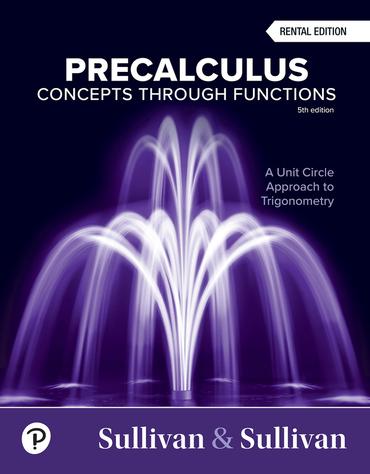Assume that the probability of winning a point on serve or return is treated as constant throughout
Question:
Assume that the probability of winning a point on serve or return is treated as constant throughout the match. Further suppose that x is the probability that the better player in a match wins a set.
(a) The probability P3 that the better player wins a best-of-three match is P3 (x) = x [1 + 2(1 − x)]. Suppose the probability that the better player wins a set is 0.6. What is the probability that this player wins a best-of-three match?
(b) The probability P5 that the better player wins a best-of-five match is P5 (x) = x3 [1 + 3(1 − x) + 6(1 − x)2]. Suppose the probability that the better player wins a set is 0.6. What is the probability that this player wins a best-of-five match?
(c) The difference between the probability of winning and losing is known as the win advantage. For a best-of-n match, the win advantage is Pn − (1 − Pn) = 2Pn − 1. The edge, E, is defined as the difference in win advantage between a best-of-five and best-of-three match. That is, E = (2P5 − 1) − (2P3 − 1) = 2(P5 − P3). Edge as a function of win probability of a set x is E(x) = 2x2 { x[ 1 + 3(1 − x) + 6(1 − x)2] − (1 + 2(1 − x))} Graph E = E(x) for 0.5 ≤ x ≤ 1.
(d) Find the probability of winning a set x that maximizes the edge. What is the maximum edge?
(e) Explain the meaning of E(0.5).
(f) Explain the meaning of E(1).
Step by Step Answer:

Precalculus Concepts Through Functions A Unit Circle Approach To Trigonometry
ISBN: 9780137945139
5th Edition
Authors: Michael Sullivan





